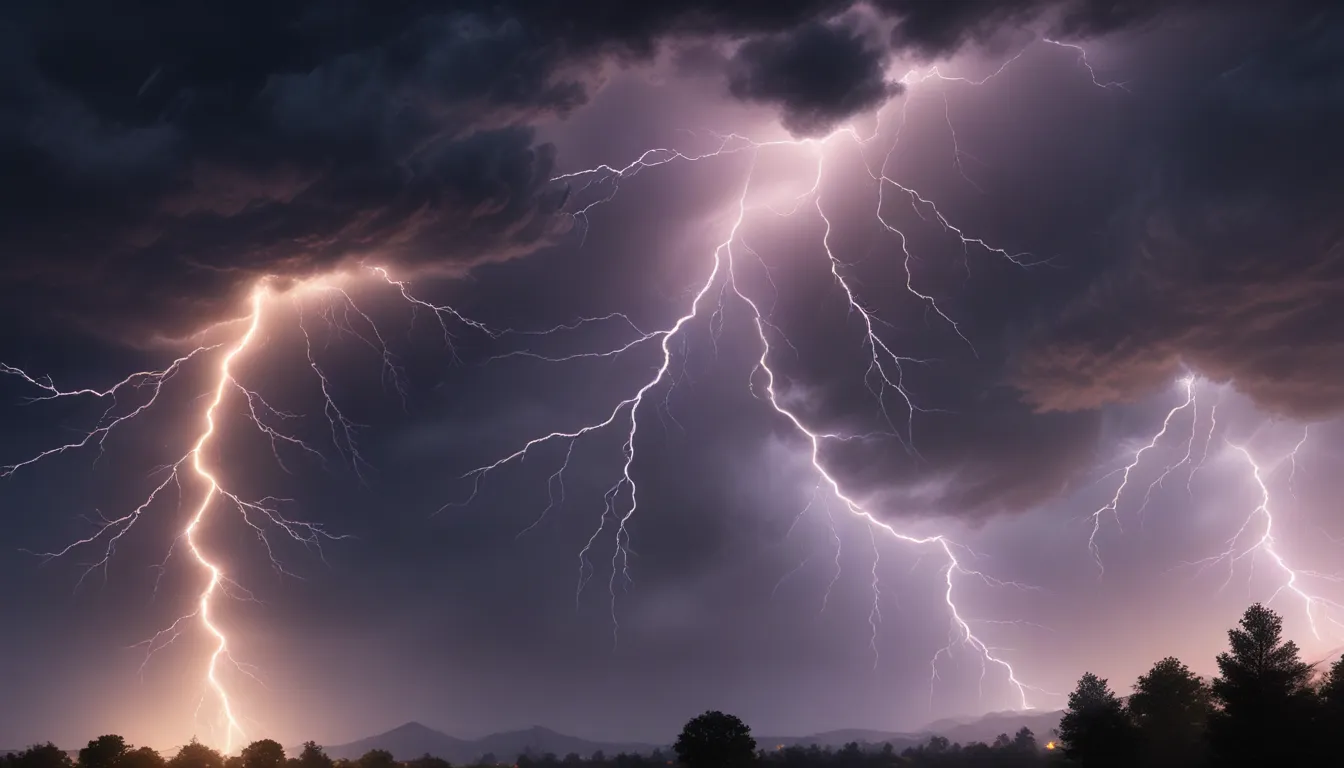A Note About Images: The images used in our articles are for illustration purposes only and may not exactly match the content. They are meant to engage readers, but the text should be relied upon for accurate information.
From the dawn of time, humans have been captivated by the awe-inspiring beauty and power of lightning. Even in our modern world, where technology reigns supreme, the sight of lightning streaking across the sky continues to amaze us. Despite centuries of observation, scientists are still unraveling the secrets of this electrifying natural phenomenon. Join us on a journey of discovery as we explore the fascinating world of lightning with these enlightening lightning facts.
Exploring the Origins of Lightning
Have you ever wondered where lightning comes from? Lightning actually originates from the cold regions deep inside a cloud, where temperatures drop as low as -15°C to -25°C. In these frigid conditions, water in the clouds turns into tiny ice crystals, propelled upward by powerful updrafts. As these particles collide and gain static charges, a positive charge accumulates in the upper part of the cloud, while a negative charge builds up in the middle and lower regions. When the electrical charge becomes too intense, it discharges as lightning, balancing the electrical field within the cloud.
The Mysteries of Lightning’s Journey
Scientists are still puzzled by the mechanisms that draw lightning to the ground. Channels of ionized air, known as ‘leaders,’ gradually descend from the clouds towards the Earth’s surface, forming step-like structures of ionized air. When lightning strikes downward, it follows these channels, creating the characteristic arcing pattern we see. The process of lightning’s descent remains a source of intrigue and questions for scientists.
Debunking Lightning Myths
Contrary to popular belief, lightning does not carry its own heat. Instead, as lightning travels through the air, it heats the surrounding air to temperatures exceeding 50,000 Kelvin, hotter than the surface of the Sun. The resulting bright blue-white color of lightning is a visual manifestation of this intense heat. Despite its fiery appearance, lightning itself remains devoid of inherent heat, rapidly cooling the surrounding air upon striking.
Unveiling the Thunderous Sound of Lightning
The crackling sound of thunder accompanies the dazzling display of lightning. As lightning zips through the atmosphere, it triggers explosive expansion, creating shockwaves that reverberate as thunder. The vibrations caused by the rapid expansion generate the rolling or rumbling sound we associate with thunder. Lightning’s thunderous symphony is a testament to the powerful forces at play in the skies above.
Unraveling the Enigma of Ball Lightning
Ball lightning, a rare and enigmatic form of lightning, has puzzled scientists for centuries. These luminous orbs, ranging from pea-sized to several meters in diameter, defy conventional lightning behavior by lingering in the sky for seconds. Despite numerous eyewitness accounts, ball lightning remains a scientific anomaly, with theories ranging from burning silicon spheres to St. Elmo’s Fire. The quest to understand ball lightning continues to intrigue researchers worldwide.
Harnessing Lightning’s Power for Good
While lightning strikes pose a significant risk to life and property, they also play a vital role in nature’s ecosystem. Lightning-induced nitrogen compounds fertilize the soil, enhancing crop growth and productivity. Furthermore, lightning’s enigmatic properties have fueled scientific discoveries, ranging from x-rays generated by lightning to lightning detection technologies. In an ever-changing climate, the impact of lightning on our environment remains a topic of ongoing research.
Lightning’s Cultural and Symbolic Significance
Through history, lightning has held a prominent place in human culture and mythology. From the thunder gods of ancient civilizations to the symbolic lightning bolts of historical organizations, the awe-inspiring power of lightning has inspired both reverence and fear. Metaphors referencing lightning illuminate our language, underscoring its significance as a force of nature and a symbol of divine power.
As we delve deeper into the world of lightning, we uncover a captivating tapestry of science, mystery, and cultural significance. From the icy depths of storm clouds to the crackling arcs of electrical discharge, lightning continues to fascinate and astound us. As we journey through the realms of science and folklore, let us marvel at the intricate beauty and power of this electrifying natural phenomenon.
Conclusion: Embracing the Power of Lightning
In conclusion, the mysteries of lightning offer a glimpse into the forces that shape our world and ignite our imagination. As we contemplate the electrifying dance of light and sound that accompanies a thunderstorm, we are reminded of the intricate connections between nature, science, and culture. Lightning, with its dazzling displays and profound symbolism, remains a timeless enigma that resonates across civilizations and generations. So the next time you witness a bolt of lightning illuminating the sky, take a moment to appreciate the wonders of nature’s electric symphony.






